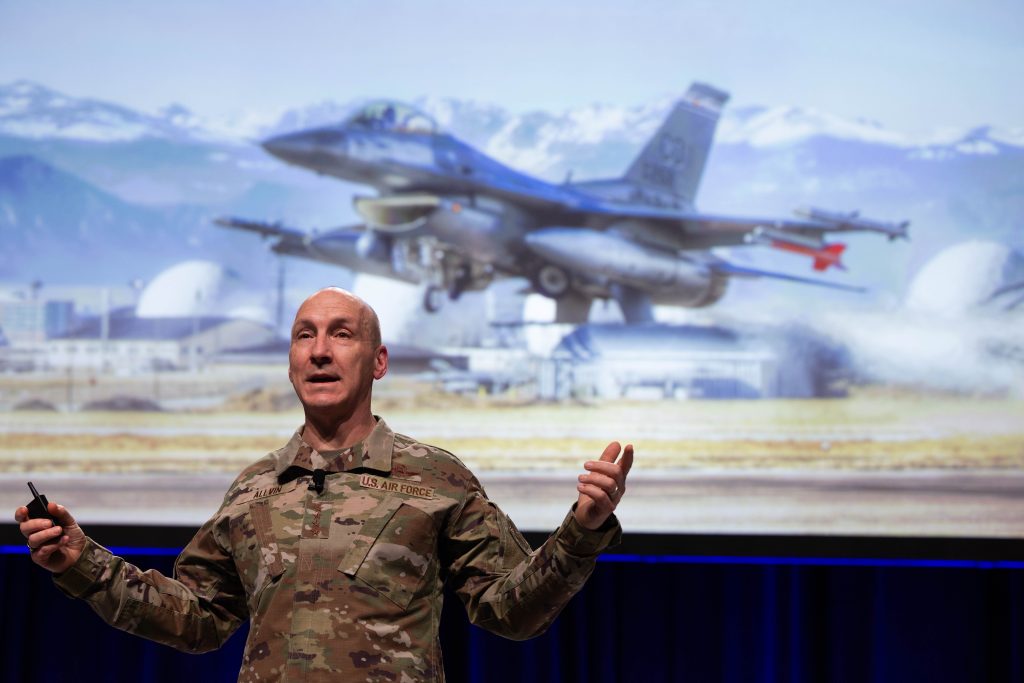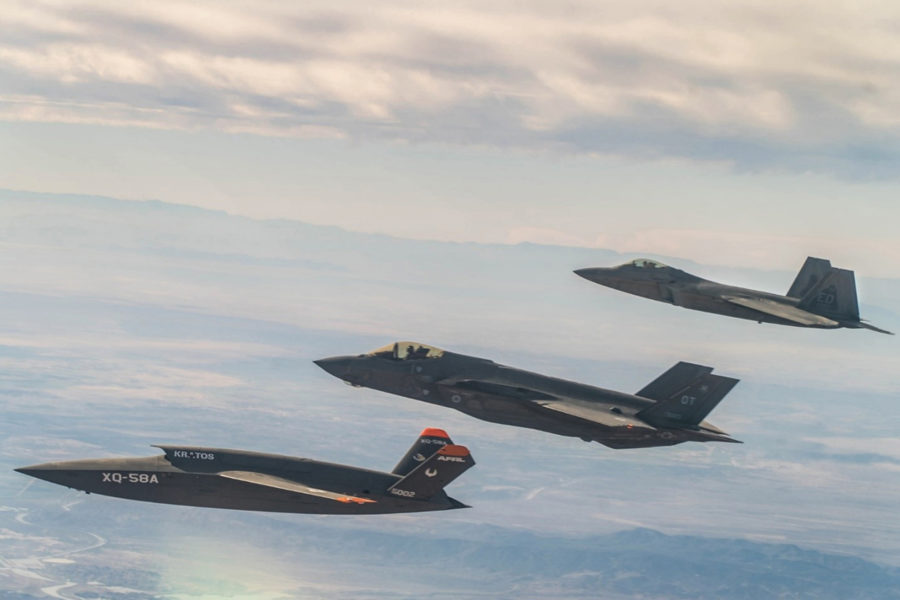The Air Force’s ambitious plans to start producing and fielding autonomous, unmanned Collaborative Combat Aircraft are prompting big picture questions about the fighter fleet, Air Force Chief of Staff Gen. David Allvin said March 7.
The number of each aircraft type is less important than how effective CCA prove to be as force multipliers, Allvin told defense leaders at the McAleese Defense Conference in Washington.
“In general, I would say if we do not embrace that a key part of future warfighting is going to be mastering human-machine teaming, human-machine integration—if we don’t get that right—I think we have an uphill fight,” Allvin said. “So what that means for the fighter force structure—it starts to blur the lines. What’s a fighter?”
The Air Force will have to ” … We have to “rethink our definition” of what a fighter is and does, he explained, and instead focus on “how we’re able to bring effects to bear against the adversary.”
Indeed, this evolution is similar to what has happened with long-range strike and tactical and strategic airpower, Allvin said, building on other recent remarks about drones and manned-unmanned teaming as driving a “reinvention” of airpower.

What Allvin outlined marks a fundamental shift in how Air Force leaders see their future fighter force. At the McAleese conference in 2021, then-Chief of Staff Gen. Charles Q. Brown Jr. laid out his vision for a “4+1” fighter mix of F-35s, F-16, F-15E/F-15EX, with the Next-Generation Air Dominance fighter replacing the F-22, and the A-10 remaining as a plus-one until it no longer proved relevant. Two years later, after Congress had finally relented on allowing USAF to divest A-10s, Brown said the plan had shifted to just “4.”
How the Air Force counts fighters is important because Congress made it law that the Air Force maintains at least 1,800 fighters in its inventory, with at least 1,145 combat ready. For now, there is a temporary exception allowing that number to fall to 1,112. Exactly how CCA will fit into that equation is still an open question.
“I think the floor and the terms that we’ve become comfortable with … keeps a strong stakeholder class really attached to the numbers of aircraft, and sometimes they’re associated with the numbers of crews, the numbers of maintenance, the numbers of jobs,” Allvin said. “But we really need to look at the future and think more about what it takes to mass the right effects at the right time.”
“Once we embrace that, I think that question [of fighter force mix] becomes less relevant,” Allvin added. “There will be harder questions to ask, but that particular question of a fighter floor will be less relevant.”
As the Air Force builds combat capacity with CCA, it must ponder tough questions about CCA including:
- Whether they are organized in distinct units or integrated into manned aircraft squadrons
- Whether they will be co-located with manned aircraft or rendezvous with them only after they’re airborne
- Whether they can operate with existing aerial refueling
- Whether fighter pilots will learn to trust their autonomous robotic teammates
- How manned-unmanned teaming will actual work in practice
Congress is eager for answers. The 2024 National Defense Authorization Act passed late last year requires the service to deliver a 12-year fighter force structure plan to Congress by April 1.
One big question on those numbers are the 32 older-model F-22 fighters. Allvin suggested that the Air Force has not yet given up on its push to retire the Block 20 Raptors, even after Congress forbade any reductions in the fleet.
Allvin said not all F-22s are equal. “There’s a block of F-22s which really lags the rest of the F-22 force, that we would not put up in a fight with the adversary necessarily, because it doesn’t have all the capabilities we need,” he said. “But the F-22 plays a pivotal role, so we’re looking to be able to take those that are most combat capable, keep them in the fight, and then leverage some of the resources for those [lesser models] that are going to be cost-prohibitive and time-prohibitive to upgrade” and use those resources elsewhere.
